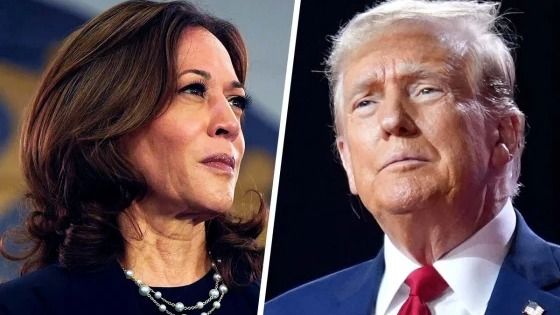In the week surrounding their high-stakes debate, Vice President Kamala Harris outspent former President Donald J. Trump by a staggering 20 to 1 on social media advertising, leveraging the moment to blanket key battleground states with digital ads. According to Meta’s advertising records cited in a New York Times report, Harris’s campaign spent $12.2 million on Facebook and Instagram, compared to just $611,228 by the Trump campaign.
This massive difference in digital spending, while striking, is part of a larger trend. Since launching her campaign, Harris has far outspent Trump online, a strategy aimed at not only securing votes in competitive states but also expanding her donor base nationwide. The digital spending gap is now causing concern among Republicans, some of whom see it as a sign of their party’s underinvestment in key online platforms.
“We just can’t afford to abandon a platform to Democrats,” said Eric Wilson, a Republican digital strategist and executive director of the Center for Campaign Innovation, warning that the GOP’s digital lag could hurt them.
A Shift from 2020
Four years ago, Trump’s campaign took the opposite approach, pouring money into digital platforms early on in hopes of gaining an edge over Democrats. At that time, as the incumbent president, Trump drastically outspent his Democratic rivals online. Now, however, with his campaign facing financial constraints, Trump is relying on a different strategy. His team is banking on the strength of his personal brand, his ability to attract online followers organically, and the power of television ads to reach voters.
Trump has sought out alternative ways to connect with online audiences. Recently, he stopped by a bitcoin bar in New York and has made appearances on YouTube shows, podcasts, and live streams. Trump has also expanded his presence on platforms like TikTok, despite his own administration’s efforts to ban the app. Additionally, he has cultivated a following on his own social media platform, Truth Social.
Still, Harris’s overwhelming digital presence — especially on Meta’s platforms — has left many Republicans concerned that Trump’s more traditional media strategy may not be enough in an election where social media has become a critical battleground.
The Battleground Breakdown
The contrast in spending between the two campaigns is especially stark in some of the most contested battleground states. In Pennsylvania, for example, Harris’s campaign spent $1.3 million on Facebook and Instagram ads in the week around the debate. Trump’s campaign, in comparison, spent only $22,465. In Michigan, Harris poured $1.5 million into digital ads, while Trump’s campaign spent a mere $34,790.
These states — Pennsylvania and Michigan — are critical to both candidates’ paths to victory, and Harris’s digital dominance has fueled Democratic optimism about their chances in November. Democratic strategists see her aggressive digital push as an effective way to engage with younger and undecided voters who may not be as easily reached through traditional television ads.
Harris’s campaign is also outspending Trump on Google’s platforms, which includes YouTube. A New York Times analysis of the seven most competitive battleground states shows that Harris’s political committees have spent $25.7 million on Google ads since she entered the race, more than double the $12.8 million spent by Trump’s campaign.
While Trump’s team has invested heavily in YouTube ads, which resemble traditional TV spots, Harris’s broader digital strategy — encompassing multiple platforms — is giving her an edge, especially in reaching less-engaged voters.
The Digital Divide
Social media has become an essential component of modern political campaigns, not only for raising funds but also for reaching key voter demographics. Younger voters, in particular, are more likely to get their news and political information online, making platforms like Facebook, Instagram, and YouTube key battlegrounds for candidates.
By outspending Trump on digital platforms, Harris’s campaign hopes to reach and engage voters who might otherwise remain unmotivated or undecided. The vice president’s campaign has made a concerted effort to target swing states, where a small number of votes could make the difference in a close election.
Trump’s campaign, meanwhile, has prioritized television advertising and personal appearances, betting that his name recognition and the strength of his donor base — built over nearly a decade — will carry him through.
However, with polling showing an ultracompetitive race, the digital gap between Harris and Trump could play a decisive role in shaping the outcome of the election.
In the end, both campaigns are aware that motivating and turning out less-engaged voters could be the key to victory. For now, Harris’s overwhelming advantage in digital ad spending is giving Democrats reason for optimism — but with weeks to go before Election Day, the outcome remains far from certain.
Explained: How Kamala Harris is Outspending Donald Trump on Digital Ads world-news World News | Latest International News | Global World News | World News Today




